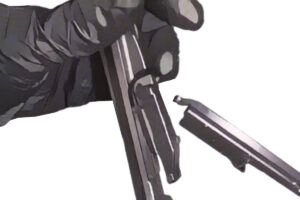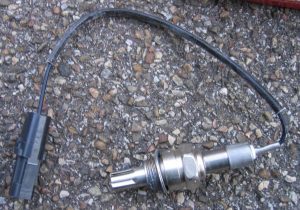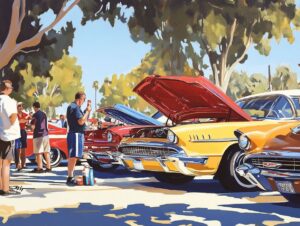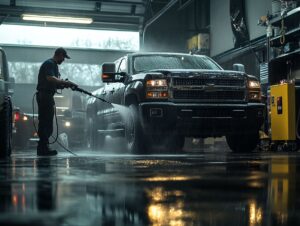
As an Amazon Associate, AutoPros earns commissions from qualifying purchases made through links in this post.
Ready to go on a summer road trip? Maybe you already booked a hotel and made a list of places to visit and things to do while on vacation. There’s nothing better than a summer road trip! You get a chance to see the country, new places and get away from your daily routine.
However, being stuck on the side of a road is a terrible experience. Make sure to prepare your car for summer and long drives by following this simple checklist.
Always Start with Checking the Tires
Every reputable mechanic or automotive publication will tell you to check your tires first. A bad tire can lead to an accident and/or being stuck on the side of the road in the summer heat. Inspect all four tires, including the spare if you have one before you start on that summer road trip.
Not sure what to look for? First, check for obvious damage to the sidewalls. Get under the car (or on the ground where you can see the inner sidewalls) and use a flashlight to inspect both side of the tires. If you see any cracks, gouges or bulges in the sidewall then replace the tire.
Now check the tire tread. Do you have any bald spots? Uneven tire wear? Or is your tread just worn down completely? It’s time to get new tires and get your car aligned if you notice uneven tire wear. There are gauges you can buy to check the tread, but you can also use an upside down quarter to check.
Checking tire tread with a quarter is simple, just put the coin in between the grooves upside down and replace the tire if you can see George Washington’s head.
Now it’s time to check the tire pressure on all your tires, as inflating tires properly is the key to making them last a long time. If they are over-inflated or under-inflated it can cause damage and shorten the life of the tires.
Check your driver side door jamb or owner’s manual to see what the correct air pressure is for your vehicle’s tires. Often, the fronts and back are supposed to be inflated to different pressures. Getting this right is important, so definitely check this before taking your summer road trip.
Basic Maintenance and Fluid Checks

Before going on a long summer road trip, make sure your vehicle maintenance is in good standing. Do you have an oil change coming up soon? Go ahead and take care of that now. While you’re at it, check all the fluids in your vehicle.
If you don’t have an oil change coming up, then simply check your oil and make sure it’s filled properly. Now move on to checking the other fluids while your hood is open.
Check the Transmission Fluid
Who checks their transmission fluid before heading off on a summer road trip? You should!
Checking the transmission fluid can be easy or difficult, depending on if it’s an automatic or manual transmission. Most transmissions are equipped with “lifetime” fluid, but it’s always worth checking if you want to extend that lifetime of the transmission.
If it’s an automatic and you have a dipstick to check, then start the car and let it warm up. Get inside the car, hold down the brakes, and cycle through your gears. Put it back in park, and check the fluid level. Is it where it needs to be? Autozone and other auto parts stores sell ATF that’s compatible with your vehicle’s existing fluid. Top it up if needed.
It’s also a good idea to use a white rag or napkin when checking the transmission fluid so you can see the color. Does it still look red? Maybe it’s brown? Turning brown? If it’s starting to turn brown or it is brown, then you might want to take it to a shop and get a transmission service performed.
Checking the transmission fluid on a manual transmission is a lot different, as you will have to jack up the car and get under it to access the fill plug. It can usually be found on the side of the gearbox housing, but you might want to check the owner’s manual for the details, as every car is different.
Checking the Coolant Level
Keeping your engine coolant topped up is especially important in the summer when the engine will get even hotter than normal. During the winter, you need coolant to run your heater, and on your summer road trip you need it for maximum engine cooling.
Run your car until it’s warmed up thoroughly, and then check the coolant level. Top it up as needed. If your coolant is old, you might want to drain and replace it. Be careful though, as changing coolant can be a messy job!
Before draining the coolant, make sure to find out the coolant capacity of your vehicle and buy the right amount to put back in. Some people buy antifreeze and mix with water, but it’s actually a lot safer to buy the pre-mixed stuff like this Peak 50/50 mix – as you know it’s 100% correct.
Check the Power Steering Fluid
Do not overlook the power steering fluid, especially if you want to avoid premature failure of your power steering pump. Even though the fluid will usually hold up for many years, it’s important to keep it topped up and replaced as needed.
Most cars will call for ATF, so you can usually use the same fluid you put in your transmission. Either way, power steering fluid is not that expensive.
You can even use a turkey baster to suck out the old fluid and then replace it with new fluid. Replace it when it turns into a dark brown color to avoid power steering issues.
Don’t Forget the Brakes and Brake Fluid
Checking the brake fluid in your car is just as important as checking the tires. While the tires keep your vehicle on the road – the brakes keep your vehicle from crashing into something (or someone). When the brake fluid gets old and starts to degrade, it will affect your braking performance. If it gets too bad, it can even cause your brakes to fail entirely.
An important tip here: Don’t go cheap on brake fluid. We strongly recommend a high-quality DOT 3 / DOT 4 / DOT 5.1 replacent fluid like this one from Bosch. Your brakes are designed save your life so putting poor quality brake fluid in your car could lead to a big time crash sometime down the road. High-quality synthetic brake fluid will resist water absorbtion and brake fading in hot weather much better than cheaper alternatives, and it’s only a few bucks more.
Find the brake fluid reservoir near the windshield on the driver side and make sure it’s at the full mark. If it’s not at the full mark, then inspect the brakes before topping up. When the brake pads are worn down, the caliper pistons will be pushed all the way out and most of the fluid will actually be in the calipers.
If you top it up in a situation like this, and then replace the brake pads, you may end up with too much brake fluid. And too much brake fluid means too much pressure and the possibility of something breaking.
So jack up the car, take a wheel off, and inspect the brakes. At the minimum, do this on a front wheel, and a back wheel. Ideally, you should be checking all four.
Now back to the brake fluid. If it’s dark and looks dirty, then flush and replace it. Just be careful, as brake fluid is poisonous, and it is also capable of stripping the paint on your vehicle. So wear rubber gloves and do not let it touch your car’s paint! (or just have a mechanic do it)
There are many guides online that will teach you how to change your brake fluid, but here is an excellent video by ChrisFix that will show you everything you need to know…
Checking the Battery
Inspect the battery for leakage or discharge around the top. You can take your battery to AutoZone and have them test it for free, or buy a cheap battery tester so you can do it yourself (your own battery tester is nice to have on hand). Either way, make sure to check your battery before taking off on your summer road trip.
Wiper Blades and Washer Fluid
When you think of summer you automatically assume sunny days, however this is not the case for everybody. Even in Florida, it rains constantly during the summer. Make sure you have new wiper blades (clean them with a microfiber and soap if they’re not worn yet) and fill up your windshield washer fluid with Prestone or another good brand.
Optional: Clean Your Car and Apply a Protective Coating
Not everyone cares about the appearance of their car, but if you want to preserve the paint and keep it looking good for as long as possible – then give it a wash and wax treatment.
After washing, you can keep it simple and apply a quick spray wax if you’re not experienced detailing cars. Anyone can do this, it’s incredibly easy. Look for Turtle Wax ICE Seal N Shine spray wax (you can read our review here) if you want something effective and easy to apply.
During your road trip you might get bugs on your car, dirt, dust, pollen, etc. All these things will wash right off if your car is waxed.
Now You’re Ready for Your Summer Road Trip!
Summer road trips are awesome, just don’t let the experience get ruined by car problems. Most problems can be prevented, so please check the fluids, brakes, battery and tires before starting your journey.
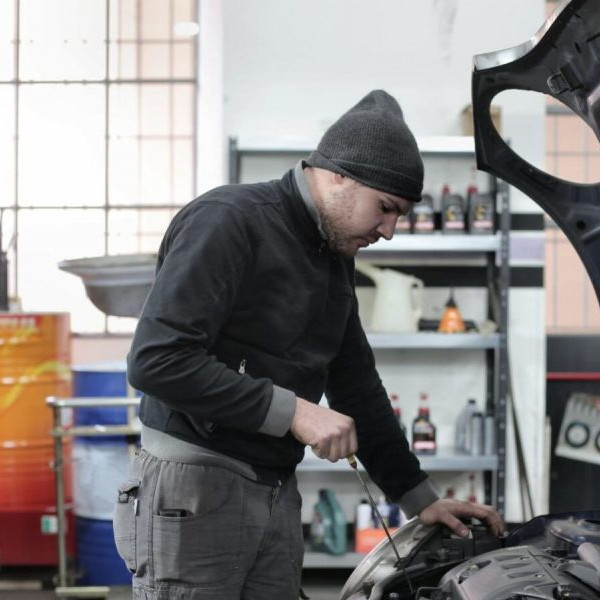
Car enthusiast with a strong love for detailing cars! I’m always keeping up with the latest industry news and watching out for the newest cars to be released. Wishing a lot of these fancy concept cars would come to life but they never do. Follow me for automotive news, detailing tips and repair help.
